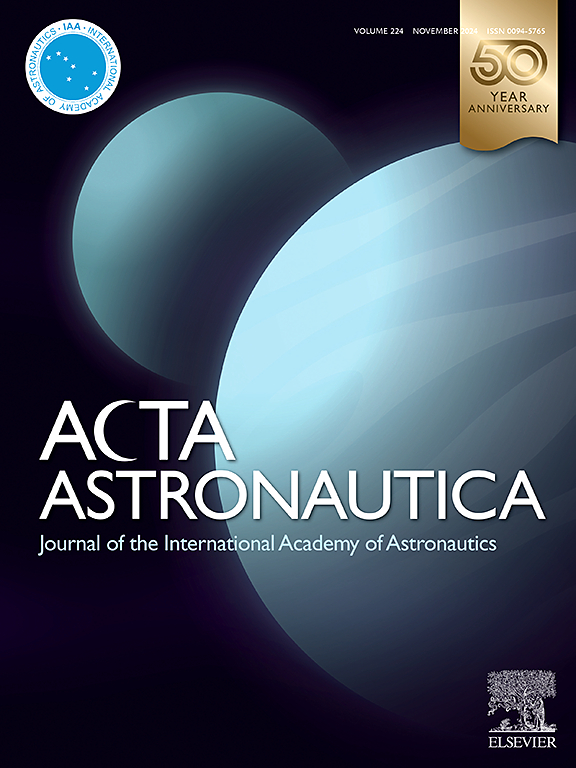Improving molten regolith electrolysis with zirconia-based hollow anode technology
IF 3.4
2区 物理与天体物理
Q1 ENGINEERING, AEROSPACE
引用次数: 0
Abstract
Molten regolith electrolysis is a promising in-situ resource utilization technology that targets O2 and metals production through the direct electrolysis of molten lunar regolith. However, there are still challenges associated with molten regolith electrolysis, such as bubble detachment and O2 separation and collection at the anode. A hollow anode, comprised of an oxygen-conducting yttria-stabilized zirconia shell and a platinum current collector, is designed here to address these challenges. Experimental results from an inverted hollow anode reactor successfully demonstrate that molten regolith electrolysis can be performed through a solid electrolyte. The elemental composition of both the cathodic products (primarily Fe and Si) and solidified lunar regolith simulant are reported as a function of electrolysis duration. These observations are supported by a thermochemical model built using FactSage to provide compositions of the cathodic products and solidified regolith simulant with increasing O2 removal. Finally, the behavior of yttria-stabilized zirconia in the hollow anode application is characterized, and provides guidance for the design and operation of a yttria-stabilized zirconia hollow anode to enable integration into a full-scale molten regolith electrolysis reactor.
用氧化锆基空心阳极技术改进熔融表土电解
熔融风化层电解是一种很有前途的原位资源利用技术,其目标是通过熔融月球风化层直接电解生产氧气和金属。然而,熔融表土电解仍然存在挑战,例如气泡剥离和阳极O2分离和收集。一种中空阳极,由氧导电氧化钇稳定氧化锆外壳和铂集流器组成,旨在解决这些挑战。倒置空心阳极反应器的实验结果成功地证明了熔融表土可以通过固体电解质进行电解。阴极产物(主要是铁和硅)和凝固的月球表土模拟物的元素组成都被报道为电解时间的函数。这些观察结果得到了利用FactSage建立的热化学模型的支持,该模型提供了阴极产物和固化表土模拟剂的组成,并增加了O2的去除。最后,对氧化钇稳定氧化锆在空心阳极中的应用行为进行了表征,并为氧化钇稳定氧化锆空心阳极的设计和运行提供了指导,使其能够集成到全尺寸熔融风化层电解反应器中。
本文章由计算机程序翻译,如有差异,请以英文原文为准。
求助全文
约1分钟内获得全文
求助全文
来源期刊

Acta Astronautica
工程技术-工程:宇航
CiteScore
7.20
自引率
22.90%
发文量
599
审稿时长
53 days
期刊介绍:
Acta Astronautica is sponsored by the International Academy of Astronautics. Content is based on original contributions in all fields of basic, engineering, life and social space sciences and of space technology related to:
The peaceful scientific exploration of space,
Its exploitation for human welfare and progress,
Conception, design, development and operation of space-borne and Earth-based systems,
In addition to regular issues, the journal publishes selected proceedings of the annual International Astronautical Congress (IAC), transactions of the IAA and special issues on topics of current interest, such as microgravity, space station technology, geostationary orbits, and space economics. Other subject areas include satellite technology, space transportation and communications, space energy, power and propulsion, astrodynamics, extraterrestrial intelligence and Earth observations.
 求助内容:
求助内容: 应助结果提醒方式:
应助结果提醒方式:


